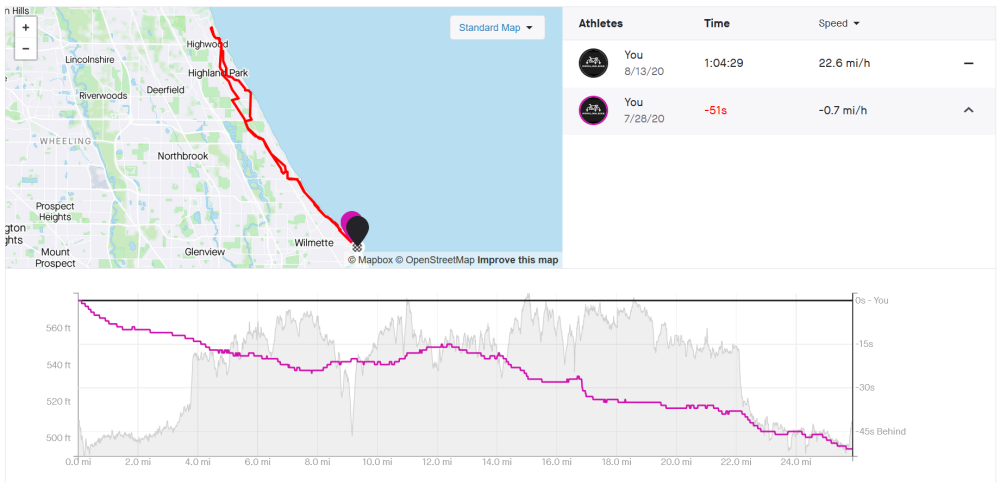If you haven’t already read the Shaving Time post, go do that. Will save me the trouble of repeating myself too much. For those that couldn’t be bothered, the TLDR; is that there’s a local ITT, I’ve been playing with different kit, setups, etc. The latest test was a multi-combo; two big changes: a much lower body position + aero wheels, and two minor: aero socks (rubbish) + 1200 lumen headlamp (it was dark when I headed out).
The main equipment change was swapping my Reynolds AERO 65 DB wheels for the Farsports 35mm road wheels I’ve been riding for most of the summer. It’s worth noting that I mounted the same kind of tire on the aero wheels as I used in the last trial, so no worries about differences in rolling resistance or tire size.
I generally ride pretty low on the hoods with a 90° (or as close as I can maintain) elbow angle. It’s the fastest way to ride on a road bike, but it’s murder on the back and arms. This go around, I took that to the next level; no modifications to the bike’s headset, just getting low – really, really low. Not quite rest-my-chin-on-the-stem low, but not that far off.
The aero socks were a $39 mistake, but more on that tomorrow :).
Headlamp, most certainly not aero, but it wasn’t safe to ride at 5:30AM this morning otherwise, so concessions had to be made.
Baseline – 1:05:20
51s is massive. An even a bigger time saving than shaving the legs, which between us, now that I know it’s faster, it’s hard not to keep doing it. How much of the difference is the wheels, and how much of it is the lower position? I don’t know, would have been more ideal to do one thing at a time, but actually doing the ITT kind of sucks (getting up at 4:45AM, suffering for an hour, etc) so sacrifices needed to be made :).
What’s most interesting to me, is how much lower the average power number was at a HR consistent with the other TT efforts which have greater average power, in some cases significantly. To my eye, this indicates a trade-off between physiological efficiency and drag reduction in the lower riding position. So while the stress level was roughly consistent across efforts, power capability was lower given the restricted position, but the increased aerodynamic efficiency more than made up for the power loss (i.e. aero is king).
Secondly, and less relevant here, but still worth noting, is that it strongly suggests that there is something to the “different FTPs for different positions” concept.

